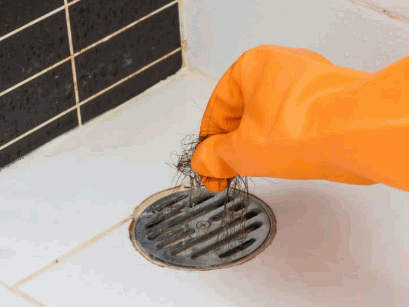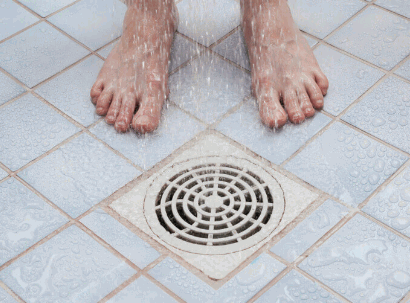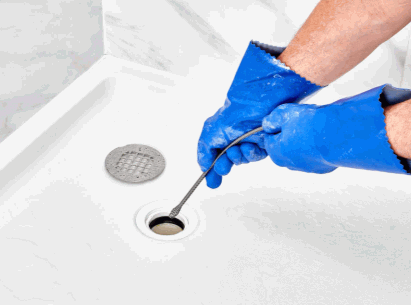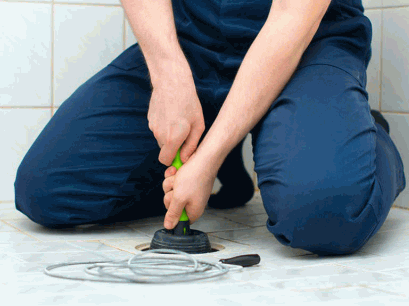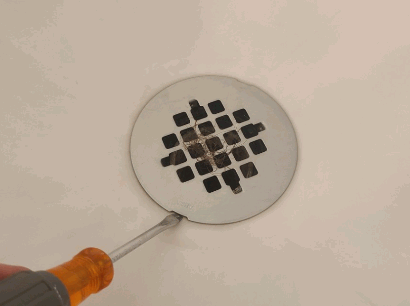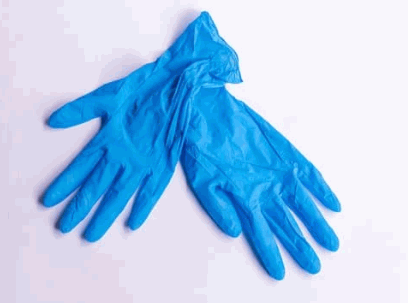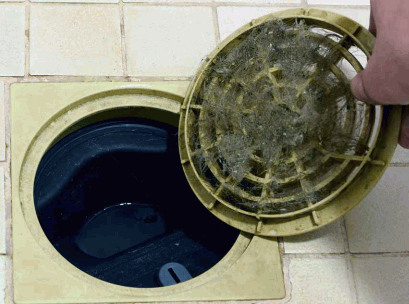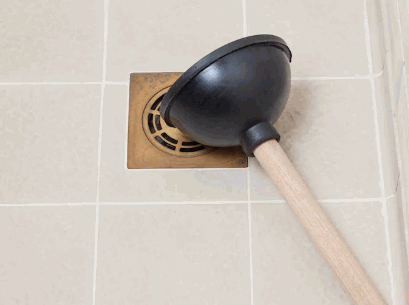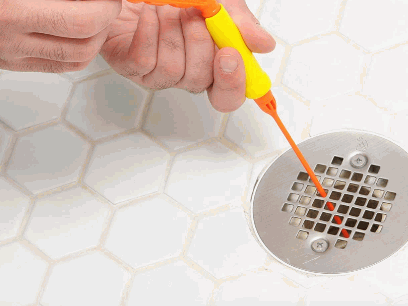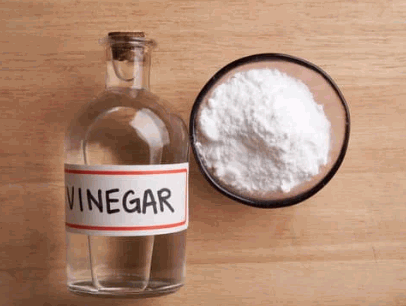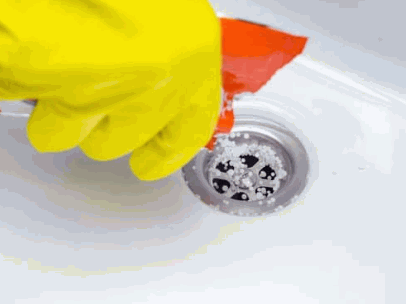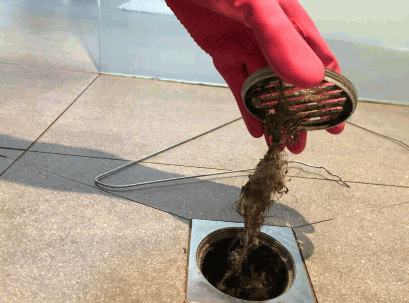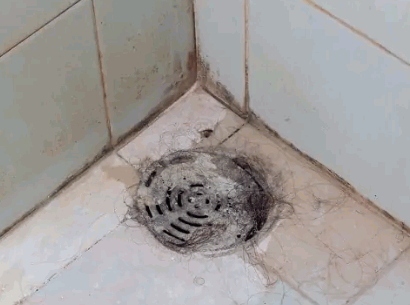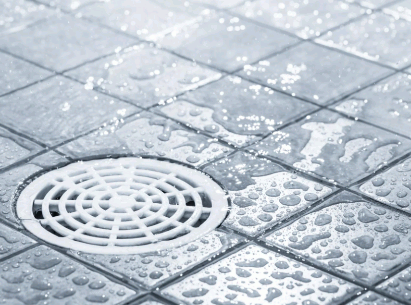Are you tired of dealing with clogged drains in your shower? Do you often find yourself standing in a pool of water every time you take a shower? Well, you're not alone. Clogged drains are a common issue that can cause frustration and inconvenience. But fear not, because, in this article, we will show you the most effective way to clean your shower drain and keep it clog-free. Say goodbye to clogged drains and hello to a smooth shower experience.
Why Do Drains Get Clogged?
Drains can become clogged due to a buildup of hair, soap scum, and mineral deposits, resulting in slow or no water drainage. The accumulation restricts the flow of water, leading to blockages. Additionally, dirt, food particles, and grease can also contribute to clogging. Regular cleaning and using drain catchers can help prevent these issues.
To prevent hair from entering the drain, consider using a hair catcher in the shower. It is also important to avoid pouring grease or oil down the drain, as this can minimize the risk of clogging.
Explore further: What Causes Drain Blockage
What Tools Do You Need To Clean A Shower Drain?
To properly clean a shower drain, there are several essential tools that you will need. These include:
The drain snake is specifically designed to remove clogs, while the plunger can effectively dislodge minor blockages. A screwdriver is necessary for removing the drain cover, and gloves are essential for protecting your hands from dirt and grime. Remember to handle these tools with care to avoid causing any damage to the drain pipes.
How To Clean A Shower Drain?
A clogged shower drain can be a major inconvenience, causing water to pool in your shower and creating unpleasant odors. But fear not, cleaning a shower drain is a relatively simple process that can be done with household items. In this section, we will walk you through the step-by-step process of how to clean a shower drain. From removing the drain cover to trying different methods like plunging or using baking soda and vinegar, we've got you covered. Keep reading to find out the best way to get your shower drain running smoothly again.
Step 1: Remove The Drain Cover
When it comes to removing the drain cover while cleaning a shower drain, here's a simple guide:
- Locate the screws or tabs securing the cover.
- Use a screwdriver or simply lift the tabs to remove the cover.
- Make sure to thoroughly clean the cover before reattaching it to the drain.
Remember, regular maintenance can prevent clogs and ensure efficient drainage.
Step 2: Remove Visible Debris
When cleaning a shower drain, Remove Visible Debris is crucial for effective unclogging.
- Wear protective gloves to remove hair, soap scum, and other debris by hand.
- Use a pair of needle-nose pliers to pull out any hard-to-reach debris.
- Rinse the removed debris down the drain using hot water.
To prevent future clogs, consider using a drain cover and flushing the drain with hot water regularly.
Step 3: Use A Plunger
- Make sure the plunger completely covers the drain.
- Place the plunger over the drain and firmly push down, then pull up forcefully. Repeat this process multiple times until the water begins to drain.
- For increased suction, apply petroleum jelly to the rim of the plunger.
Pro-tip: To optimize the plunger's effectiveness, seal any overflow outlets in the shower to ensure a strong suction.
Step 4: Try A Drain Snake
- Try a Drain Snake to dislodge and remove stubborn clogs. Insert the snake into the drain and rotate it to catch the clog, then carefully pull it out.
Suggestions: Consider wearing gloves while using a drain snake, and always read the instructions for proper usage and safety precautions.
Step 5: Use Baking Soda And Vinegar
- Mix 1/2 cup of baking soda with 1/4 cup of table salt, and pour it down the drain.
- Follow with 1 cup of heated vinegar. This natural mixture will create a bubbling and fizzing reaction, so be sure to cover the drain to keep the fizz inside.
- After 15 minutes, pour in boiling water to clear any remaining residue.
Step 6: Use Chemical Drain Cleaners
- Protect Yourself: Wear gloves and safety goggles to guard against chemical splashes.
- Read Instructions: Follow the manufacturer's directions carefully, including proper ventilation.
- Apply Cleaner: Pour the recommended amount of the chemical drain cleaner down the clogged drain.
- Wait: Allow the cleaner to work for the specified time before flushing with water.
- Preventive Measures: Consider using chemical cleaners as a last resort due to their environmental impact and potential pipe damage. However, if necessary, follow these steps to use chemical drain cleaners safely and effectively.
How Often Should You Clean Your Shower Drain?
- It is recommended to regularly inspect your shower drain for any clogs or blockages. A monthly check can help prevent buildup.
- To maintain optimal flow, use a drain cleaner or a homemade solution of vinegar and baking soda to clear the drain on a quarterly basis.
- Prevent blockages by installing a drain cover to catch hair and debris.
Remember, regularly maintaining your shower drain can save you from costly repairs and ensure smooth water flow.
What Are Some Tips To Prevent Shower Drain Clogs?
Dealing with a clogged shower drain can be a frustrating and unpleasant experience. That's why it's important to take preventative measures to avoid clogs in the first place. In this section, we will discuss some simple yet effective tips to keep your shower drain clear and flowing smoothly. From using a drain cover to avoiding certain substances, these tips will help you maintain a clean and functional shower drain.
1. Use A Drain Cover
- Protect your shower drain from clogging by investing in a high-quality drain cover.
Opt for a stainless steel or silicone drain cover, as they are both durable and easy to clean. Remember to regularly remove and clean the drain cover to ensure proper drainage.
2. Avoid Pouring Grease And Oil Down The Drain
- Use a strainer to prevent grease and oil from entering the drain.
- Dispose of grease and oil in a separate container and throw it in the trash.
- Scrape off greasy food residues into the trash before rinsing dishes in the sink.
- Avoid pouring grease and oil down the drain and opt to throw it in the trash instead.
3. Use A Hair Catcher
- Remember to use a hair catcher over the shower drain to trap hair and prevent it from clogging the pipes.
4. Flush The Drain With Hot Water Regularly
- Regularly flush the drain with hot water to prevent clogs and maintain efficient drainage.
Consistently pouring a kettle of hot water down the drain helps to dissolve any accumulated soap scum, hair, or other debris, preventing blockages and foul odors.
5. Consider A Professional Drain Cleaning Service
- Assess the severity of the clog and consider hiring a professional drain cleaning service if DIY methods are ineffective.
- Contact reputable plumbing services and request quotes for drain cleaning.
- Verify the credentials, experience, and customer reviews of the selected drain cleaning service before making a decision.
- Discuss the pricing, service guarantee, and potential additional charges with the chosen professional drain cleaning service.
- Schedule periodic professional drain cleaning to maintain optimal drain functionality.
When facing persistent drain issues, it's highly recommended to consider hiring a professional drain cleaning service for thorough and effective solutions.
